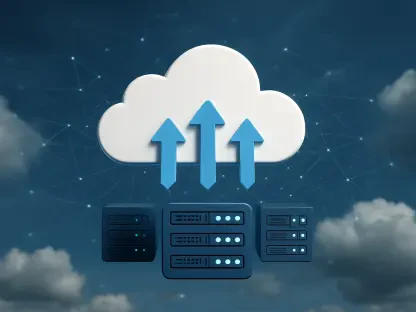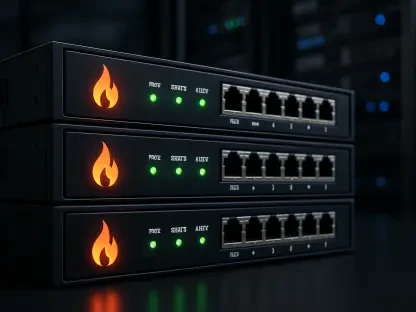In a remarkable leap forward for the telecommunications industry, a major player has shattered barriers by integrating a third-party automation application into a live production network, marking a historic first. This achievement, driven by collaboration between AT&T and Ericsson, showcases the potential of Open RAN principles to redefine how networks are built and managed. By leveraging cutting-edge technology and standardized interfaces, this milestone not only highlights the power of openness and innovation but also signals a shift toward a more flexible, automated future for telecom infrastructure. The implications are vast, promising to reshape how communication service providers (CSPs) operate, optimize, and scale their networks in an increasingly competitive landscape. This development raises compelling questions about the pace of industry transformation and the role of multi-vendor ecosystems in driving efficiency.
Breaking New Ground in Network Automation
Pioneering Third-Party Integration
The recent deployment of a third-party RAN automation application, known as an rApp, on a live network by AT&T in partnership with Ericsson represents a groundbreaking moment for telecom innovation. This achievement, facilitated by Ericsson’s Intelligent Automation Platform (EIAP) and the standardized Open RAN R1 interface, positions AT&T as a global leader among CSPs in adopting such advanced automation in a real-world environment. Unlike near-real-time applications, rApps operate on slower cycles, making them ideal for critical tasks such as monitoring key performance indicators (KPIs), network healing, and predictive maintenance. This integration underscores a pivotal shift toward programmable networks that can adapt dynamically to operational demands, offering a glimpse into a future where manual intervention becomes increasingly obsolete. The success of this deployment validates the potential for third-party solutions to enhance network performance across multiple dimensions, including energy efficiency and spectrum utilization.
Impacts on Operational Efficiency
Beyond the technical feat of integrating an rApp, this milestone carries significant implications for operational efficiency within the telecom sector. By utilizing real-time network telemetry and policy-driven objectives, the rApp optimizes RAN performance in ways previously unattainable with traditional systems. Tasks such as adjusting coverage areas or fine-tuning resource allocation can now be handled with greater precision, reducing downtime and improving service quality for end users. This level of automation also promises substantial cost savings for CSPs, as it minimizes the need for extensive human oversight and mitigates the risk of errors in complex network environments. Furthermore, the ability to leverage data-driven insights for predictive maintenance ensures that potential issues are addressed before they escalate, enhancing overall reliability. As the industry continues to grapple with growing data demands, such advancements provide a critical edge in maintaining robust, scalable networks that meet modern expectations without straining budgets.
The Future of Open RAN and Multi-Vendor Ecosystems
Shifting from Closed to Open Architectures
A defining trend illuminated by this deployment is the industry’s transition from closed, single-vendor Self-Organizing Networks (SON) to an open, future-proof architecture guided by Open RAN Alliance standards. The use of the R1 interface enables seamless communication between rApps and Service Management and Orchestration (SMO) systems, allowing for real-time adjustments to RAN configurations. This evolution empowers CSPs like AT&T to adopt best-in-class solutions from a diverse array of vendors, breaking free from the constraints of proprietary systems that have long dominated the sector. Such openness fosters a competitive environment where innovation thrives, as developers and vendors are encouraged to contribute specialized tools without fear of incompatibility. Industry leaders have hailed this shift as a transformative moment, emphasizing its potential to drive agility and reduce dependency on any single provider, thereby creating a more resilient and adaptable telecom landscape.
Building a Broader Developer Ecosystem
Another critical aspect of this development is its role in cultivating a broader developer ecosystem that supports multi-vendor collaboration. The successful integration of a third-party rApp on Ericsson’s platform demonstrates the readiness of such systems to accommodate diverse contributions, paving the way for an influx of creative solutions tailored to specific network challenges. Comments from AT&T’s RAN technology leadership reflect enthusiasm for the innovation and efficiency that programmability unlocks, while Ericsson executives have highlighted the robustness of their platform in enabling this ecosystem. Although the rApp landscape is still maturing, this achievement sets a powerful precedent for wider adoption of standards-based automation across the industry. By reducing barriers to entry for smaller vendors and independent developers, Open RAN principles promise to democratize access to cutting-edge technology, ultimately benefiting CSPs and consumers alike through enhanced choice and improved network capabilities.
Reflecting on a Milestone for Telecom Progress
Lessons from a Historic Deployment
Looking back, the collaboration between AT&T and Ericsson to deploy a third-party rApp on a live production network stood as a defining moment in the journey toward open and automated telecom infrastructure. This pioneering effort not only proved the viability of multi-vendor programmability but also showcased the tangible benefits of leveraging standardized interfaces like Open RAN R1. The ability to optimize network operations through data-driven automation marked a departure from traditional, rigid systems, offering a blueprint for how CSPs could achieve greater flexibility and efficiency. Reflecting on this achievement, it became clear that the industry had taken a significant step toward disaggregation, with the potential to redefine vendor relationships and operational models. The success of this integration served as a testament to the power of collaboration and standardization in overcoming long-standing challenges within the telecom space.
Charting the Path Forward
As the dust settled on this landmark deployment, the focus shifted to the actionable steps needed to sustain and expand upon this progress. Industry stakeholders recognized the importance of accelerating the development of the rApp ecosystem by encouraging more third-party vendors to create compatible solutions. Investments in training and resources for CSPs to adopt Open RAN technologies emerged as a priority, ensuring that smaller operators could also benefit from these advancements. Additionally, ongoing collaboration between major players like AT&T and Ericsson was seen as essential to refine standards and address any interoperability issues that arose. The broader adoption of open architectures was identified as a key driver for future innovation, with the promise of delivering more resilient, cost-effective networks. This historic milestone laid a strong foundation, but the path ahead demanded continued commitment to openness, automation, and multi-vendor synergy to fully realize the transformative potential of modern telecom infrastructure.









